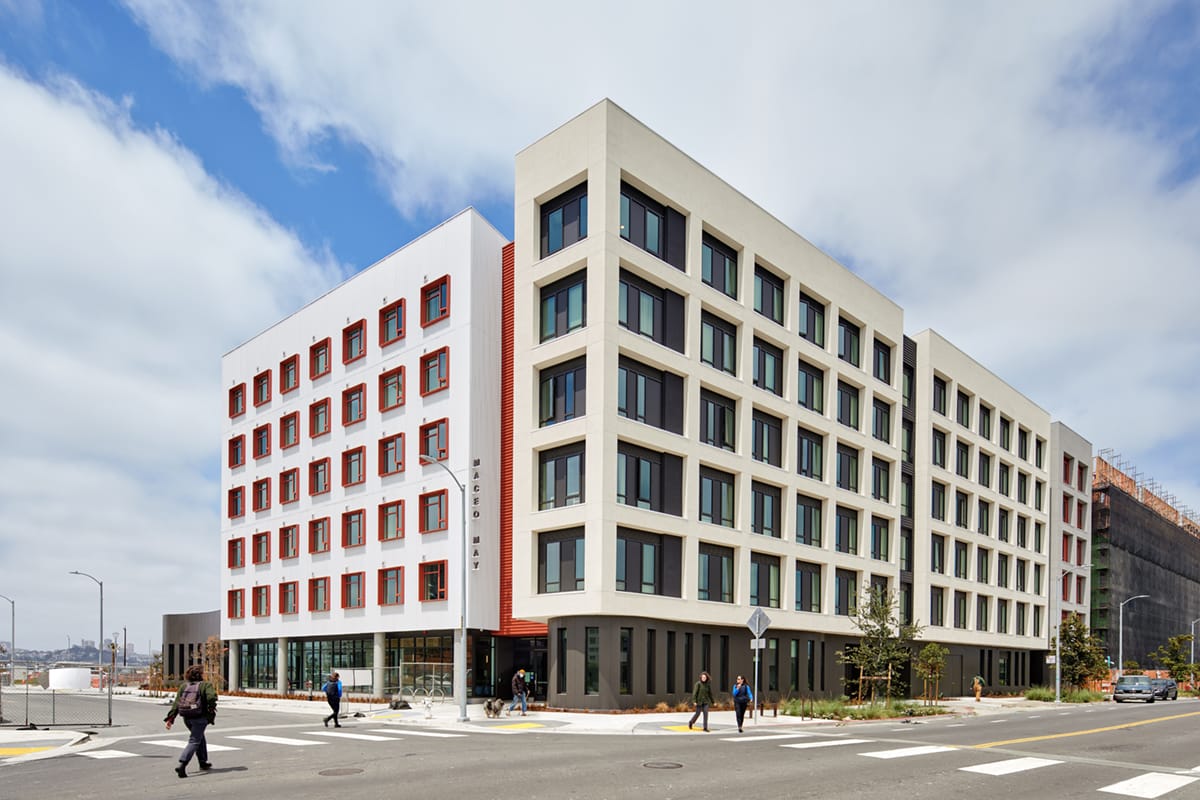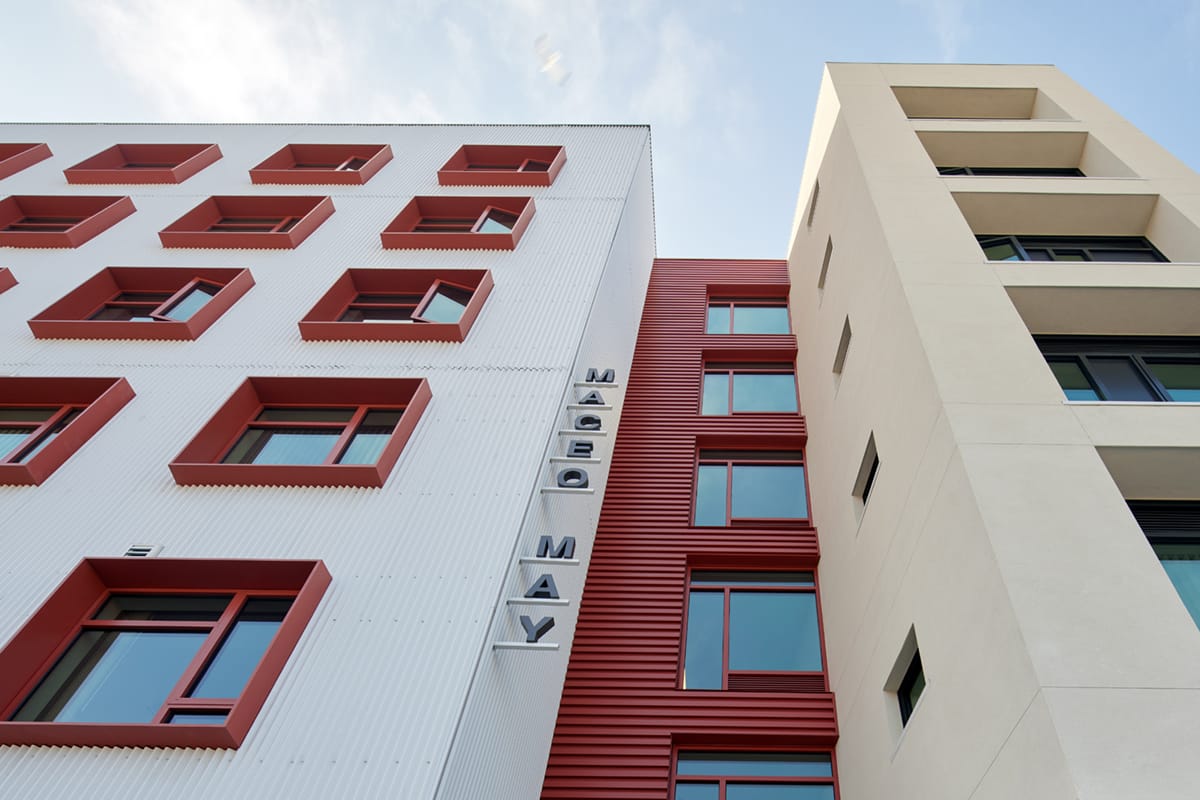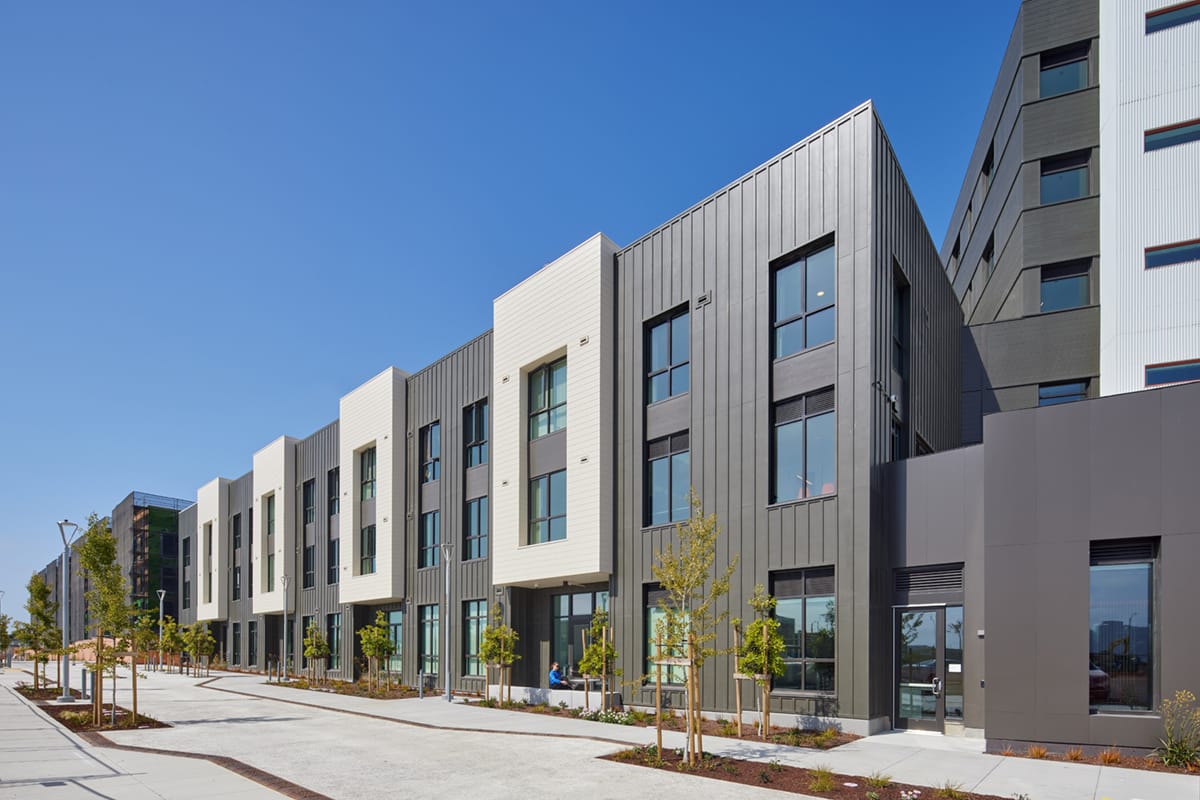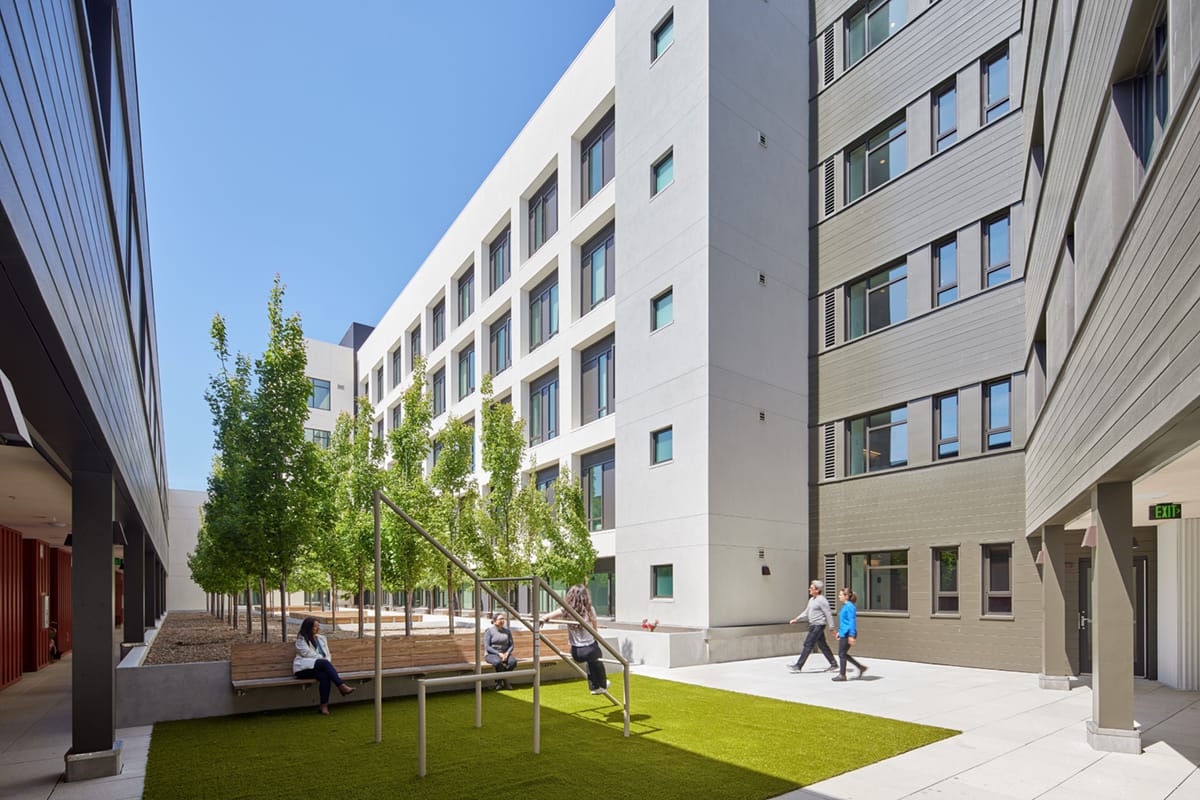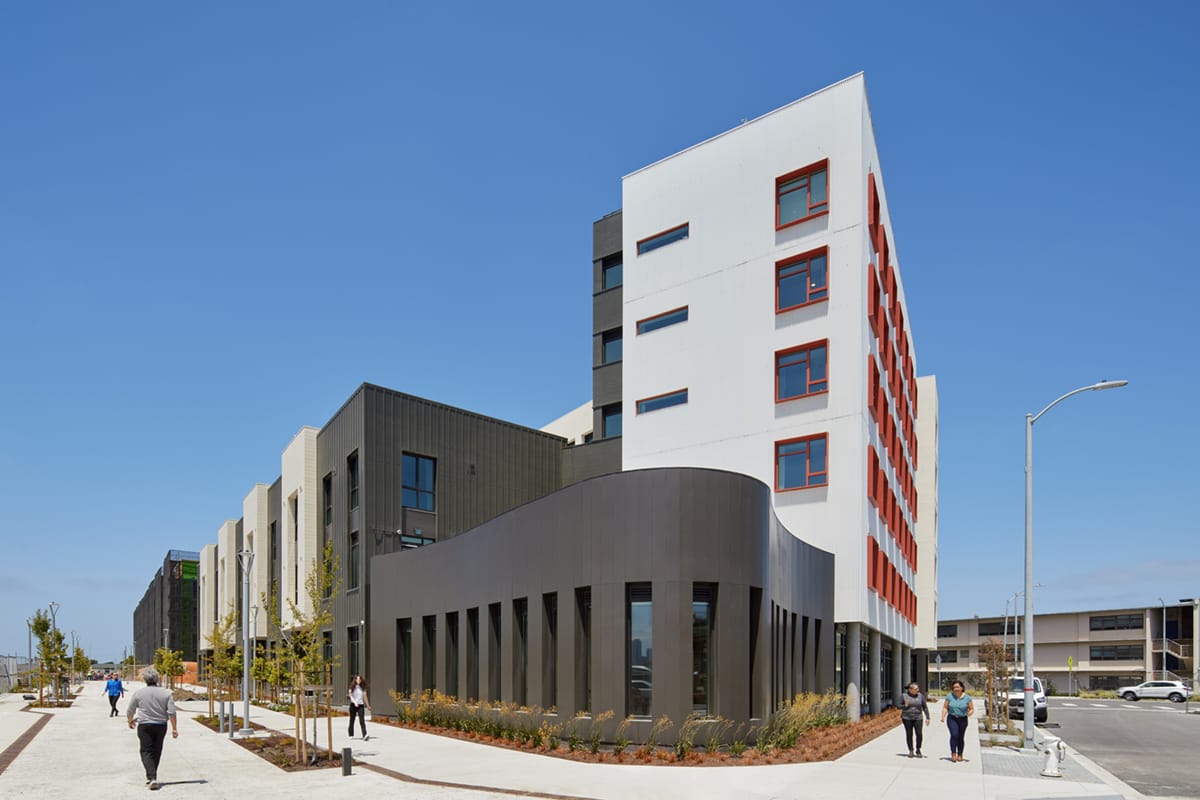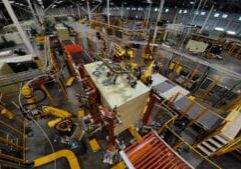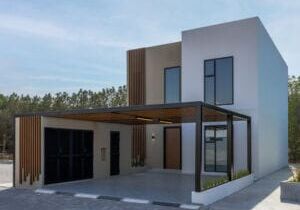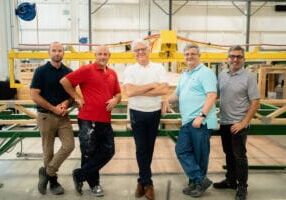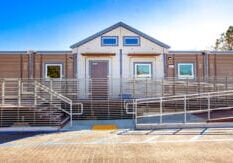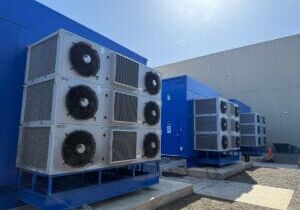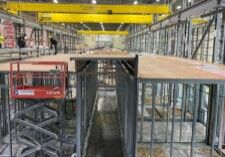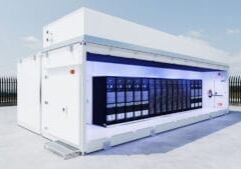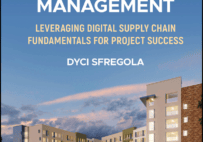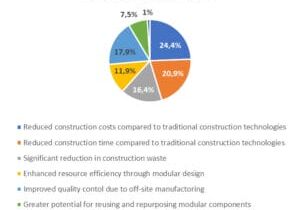Maceo May
Maceo May is a six-story, all-electric modular construction, affordable housing development located on Treasure Island in San Francisco Bay. The climate-responsive design provides 104 homes for formerly homeless veterans and their families with a strong focus on decarbonization, resilience and wellness. The apartment building offers 1 on-site manager’s unit, and a mix of 24 studio, 47 one-bedroom and 34 two-bedroom units.
This structure marks the first residential and 100% affordable housing development on Treasure Island. Amenities include on-site residential services, property management offices, a community room, shared laundry room, parking, bicycle storage, outdoor common areas, a barbeque, a forested healing garden, a playground, and a roof deck.
Project Name: Maceo May
Location: 55 Cravath Street, Treasure Island, San Francisco
Square Footage: 104,500 on 0.74 acres
Architect: Mithun
General Contractor/Builder: Cahill Contractors
Developers: Swords to Plowshares, Chinatown Community Development Center
Photography: Bruce Damonte
Product Featured: All Weather Series 6000 casement fixed and multi lite configurations. Custom colors and custom shadow box.
Resilience Strategies
Net zero capable, Maceo May features All Weather Architectural Aluminum Series 6000 windows to maximize energy efficiency. Passive design strategies and superior ventilation also limit energy use, create good air quality, and support the thermal comfort of residents The operable All Weather Series 6000 windows are oriented to take advantage of San Francisco Bay breezes. The Series 6000 windows are thermally broken, have a u-value of 0.34 and a solar-heat gain resistance of 0.19, and the double-pane low-E glazing is argon filled for a high level of insulation and resistance to heat transfer. South- and west-facing windows are shaded. In residential units, ceiling fans and operable windows located at different heights maximize airflow.
Modular Construction
Designed by Mithun and constructed by Cahill Contractors, Maceo May’s overall design is thoughtful, colorful, and detail oriented. The white facade is amplified by red casings that surround each All Weather window. The volume is broken up between a series of townhouses and a mid-rise. This punctuation further embeds the building within its urbanizing landscape.
Mithun chose volumetric stick-frame modular construction to reduce construction cost and duration, speeding the delivery of this much needed housing. While construction work was occurring on the Treasure Island site, 176 wood frame ‘mod boxes’ were being fabricated in a factory. The fully finished units were craned into place atop a concrete podium structure which had been under construction in parallel to factory production Once the mods were set, site work proceeded by connecting MEPS systems, and installing roofing and exterior cladding.
The volumetric modular approach produced an estimated 8% cost savings and reduced construction lead time by four months. Delivering much-needed housing in a faster and more cost effective construction method provided significant social impact on the lives of low-income communities, where the need for high quality, healthy, sustainable housing was the greatest.
Awards and Certification
Pursuing Fitwell certification, Maceo May emphasizes social cohesion and wellness with active design principles within the building to connect residents to each other and the natural environment via the adjacent shared public way, community park and island trail network.
On track to earn a GreenPoint Gold certification, the project prioritizes resilience and sustainability by utilizing healthy and durable materials throughout to withstand natural disasters and the effects of climate change. As such, the development is designed to be protected from sea level rise and to continue operations and remain safe and comfortable during periods of extreme heat, power outages, wildfire smoke, and seismic events.
More from Modular Advantage
Resia: Breaking All the Rules
Resia Manufacturing, a division of U.S.-based Resia, is now offering prefabricated bathroom and kitchen components to industry partners. Its hybrid fabrication facility produces more precise bathroom and kitchen components (modules) faster and at lower cost than traditional construction. Here’s how Resia Manufacturing does it.
How LINQ Modular Innovates to Bring Modular To The Market in the UAE and Beyond
LINQ Modular, with an office and three manufacturing facilities in Dubai, is a modular firm based in United Arab Emirates. The company is on a mission: to break open the housing and construction markets in the Gulf Cooperation Council (GCC) area with modular.
ModMax: Redefining Modular Construction with Confidence and Precision
ModMax was born out of frustration—frustration with five persistent pain points in modular construction: Permitting bottlenecks. Production delays. Rigid designs. Disconnect between “the office” and the field. Lack of transparency and communication.
LifeArk: Disaster-Resilient Housing from Recycled Plastic and 100-year-old Technology
Wee compares LifeArk’s housing units to Yeti coolers, as they are built similarly. Each component takes 15 to 20 minutes to manufacture, has an R-value of 40, and includes molded slots and chases for wiring, plumbing, fire sprinklers, and other utilities.
Building the Future of Modular Edge Infrastructure
The edge data center market is expanding rapidly, driven by the surge in AI workloads, IoT adoption, and the need for localized compute power. In these environments, sustainability, scalability, and reliability are non-negotiable. Cooling is among the most complex challenges for operators—and one of the most decisive factors in long-term success.
Accelerating Light-Gauge Steel Construction: A Semi-Automated Digital Workflow for Off-Site Projects
For construction professionals, the message is clear. By adopting semi-automation and digitalization, companies can deliver projects faster, more accurately, and more profitably, while also building stronger collaboration across teams. The approach is not about replacing people with machines, but about empowering people with better tools and processes.
Why Modular Data Centers Are Gaining Momentum
Artificial intelligence, high-performance computing, and edge applications push the limits of traditional “stick-built” data centers. They take years build, often struggle with high density workloads, and aren’t optimized for deployments near end users. Modular data center platforms are purpose-built to address these challenges, offering flexibility and scalability to adapt to evolving technologies, while opening new opportunities for the modular construction industry.
Supply Chain Innovation in Action: 5 Habits Every Modular Leader Should Practice
By applying these principles to supply chain practices — collaborative planning, strategic procurement, scenario modeling, digital tools, and transparent forecasting — construction leaders can build value chains that are not just efficient and agile, but truly innovative.
Exploring the Role of Modular Integrated Construction (MiC) in Advancing Circular City Principles – A Survey of Stakeholder Perspectives
The survey findings highlight the significant potential of Modular integrated Construction (MiC) in advancing the development of circular cities. By reducing costs, accelerating construction timelines, and minimizing waste generation, MiC offers a promising approach to sustainable urban development.
The Use of MS POLYMER™-Based Sealants and Adhesives in Modular Building
These products combine flexibility and elastic recovery with excellent adhesion to different substrates and have already shown their usefulness in traditional construction. Now it’s time for them to be put to use in the modular construction industry.

